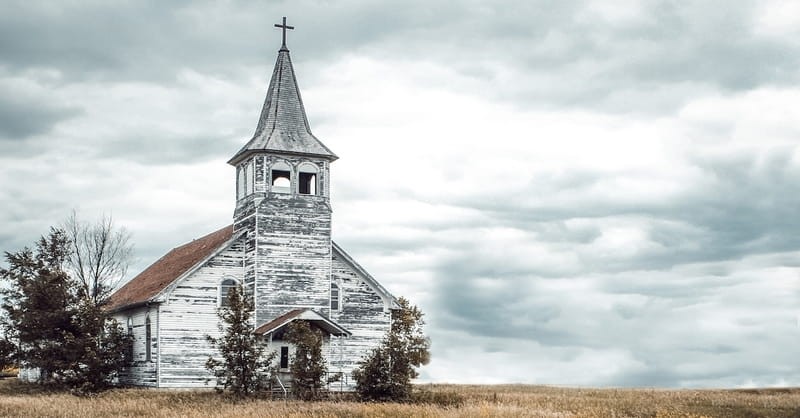Blog Archives
When contemporary Christian music was introduced to Mississippi Baptists

Article copyright by Robert C. Rogers and the Mississippi Baptist Convention Board.
Although typical worship services were still dominated by hymns and Southern gospel songs, the “Jesus people” movement introduced contemporary music to the church in the early 1970s. Throughout the 1970s, it became common for Baptist youth choirs to go on tour, singing contemporary music at other churches. In December 1971, First Baptist Church, Long Beach, advertised in The Baptist Record that their youth choir would premier an hour-long youth musical composed by Otis Skillings, entitled “Love.” One of the most popular musicals, called “Celebrate Life,” was published by Broadman Press, the Southern Baptist publishing house. In 1972, Plantersville Baptist Church had one of the youngest choirs, ages 7-12, singing contemporary religious music on tour at churches in Mississippi in Alabama. One of the early groups popular among Mississippi Baptist youth was a hybrid between a college-aged choir and brass band called “Truth,” organized by Roger Breland from Mobile, Alabama. In 1971, Truth took the Mississippi Baptist Youth Night by storm, and were invited back in 1972 “by popular demand.”1
In 1975, Broadman Press published a new Baptist Hymnal which included some contemporary songs and spirituals, in addition to traditional hymns. Dan Hall, director of the Church Music Department of the Mississippi Baptist Convention, was one of the first to endorse the new hymnal. However, music styles became a divisive issue among Mississippi Baptists, as illustrated by months of debate in The Baptist Record in 1985. After a letter in August 1985 complained that “Christian rock” music was “demonic.” Soon letters were published every week, alternately defending and attacking “Christian rock” music. The debate continued for months until Randy Weeks of Columbus wrote a letter to the editor in rhyme, asking: “To rock and roll/ must I sell my soul/ as some insinuate?… For once more it seems/ humanity screams/ for answers to save all their lives/ and we spend our days/ thinking up ways/ to criticize Christians who jive.”2
SOURCES:
1 The 1973 annual meeting of the Mississippi Baptist Convention listed the congregational songs at each session, all of which were traditional hymns, such as “All Hail the Power of Jesus Name,” “Stand Up, Stand Up for Jesus,” and the Bill Gaither Southern gospel song, “He Touched Me.” Minutes, Mississippi Baptist Convention, 1973, 39-41; The Baptist Record, December 16, 1971, 3; December 27, 1971, 7; October 19, 1972, 7; December 14, 1972, 1, 2.
2 The Baptist Record, March 6, 1975, 1; August 22, 1985, 11; August 29, 1985, 8; September 5, 1985, 6; September 12, 1985, 9; September 19, 1985, 9; October 31, 1985, 6; November 14, 1985, 5.
Dr. Rogers is currently writing a new history of Mississippi Baptists.
Tweeting Alien Hymns
Copyright 2013 by Bob Rogers

Twitter is becoming a hotbed of holy humor these days. One can find some crazy characters with names like “Unappreciated Pastor,” “Church Curmudgeon,” “Back Row Baptist,” “Lloyd Legalist,” and “Bad Chruch Secretary” (deliberately misspelled).
Recently, they all came out of the woodwork when one of the top trends on Twitter was #AlienHymns.
For the Twitterless and clueless, let me explain. Twitter uses hashtags with the pound symbol (#) to allow people who don’t even know each other to join in a discussion of the same topic. This is often popular at conventions and during top TV shows, as people can go to the same hashtag and discuss what is going on while it is happening. Sometimes a hashtag gets repeated so much that millions of people are using it, and it becomes a top trend. That’s what happened to #AlienHymns.
In honor of the U.S. government admitting there really is a secret zone called Area 51, “Back Row Baptist” speculated what would be the name of some hymns if they were sung by space aliens. Here were some submissions that erupted on Twitterland:
“It is Well with My Hans Solo”
“Klingon Me, When You’re Not Strong”
“Swing Low, Sweet Mothership”
“Let’s Break Warp Speed Together”
“I Beam Thee Every Hour”
“Amazing Space”
“I Come to the Garden a Clone”
“Just a Lunar Walk with Thee”
“Zoom By Ya”
Okay, enough already. You get the idea. While this sort of silliness may be entertaining for a season, the fact is that hymns and spiritual songs aren’t designed for space aliens; they’re designed for you and me. As the apostle Paul said, “Let the message about the Messiah dwell richly among you… singing psalms, hymns, and spiritual songs, with gratitude in your hearts to God” (Colossians 3:16, HCSB).
So grab your hymnal or project your PowerPoint, and lift your voice in praise to our God. After all, He is out of this world!

